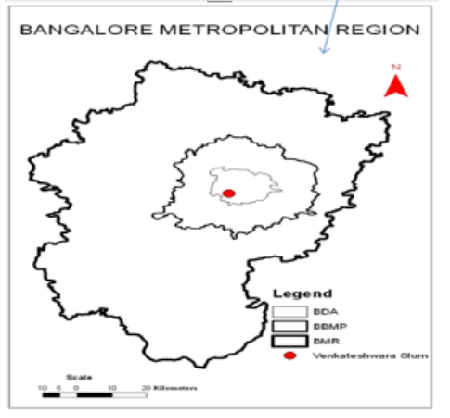
Geographical analysis
Department of Geography & GIS

Department of Geography & GIS

Geographical analysis
DOI: 10.53989/bu.ga.v11i1.22.4
Year: 2022, Volume: 11, Issue: 1, Pages: 18-21
Original Article
M B Shivanna1*
1Head of Department of Geography, Govt. First Grade College, Vijayanagara, Bangalore
*Corresponding Author
Email: [email protected]
Received Date:10 February 2022, Accepted Date:18 April 2022
One in every people in the world will live in slums. Within 30 years unless government control unprecedented urban growth, according to a UN report. Urbanization and industrialization have led to increase slum population at rapid in India. Major cities of India like, Mumbai, Delhi, Chennai, Bangalore, Hyderabad and Mysore have experiences slums. In India, 350 million population lives in urban areas. Which constitute 30% of the population of India as per 2001 census. Generally slums are specific geographic areas that are physically and socially deteriorated, economically backward and house a floating and often marginalized people. Bangalore also has more number of slums that are spread in all the parts of the city.
Keywords Geographical Analysis of slums
Ashirvad N., 1990, “Slums in Vijawada City in Civic Affairs. Vol.38(4), November, 1990.
Bhalla, Manju, 1995, “Slums in Metropolis: A Case Study of Delhi.” Jawaharlal Lal Nehru University.
Chainey S. “The Search for Accuracy in Crime Hotspots.” UCL Jill Dando Institute of Crime Science.
Clinard, Marshall B., 1990 “Theories of Slum in A.R Desai and Deveadas Pillai Slums and Urbanization”
Girish, T.G.K., 1998, Planning for Urban Infrastructure under Decentralized Governance: A Case study of Mysore City.
Hindu, 1984, “India Struggle against slums”, December 7, 1984.
Taxman F. S., McEwen T., 1997, “Using Geographical Tools with Interagency Work Groups to Develop and Implement Crime Control Strategies”, Crime Prevention Studies. Vol.8: Willow Tree Press, Inc.
Ujjwal Sur,Sadhana Jain., Sokhi B.S., Identification / Mapping of Slum Environment using IKONOS Satellite Data: A Case Study of Dehradun, India
Weisburd D., McEwen T., 1997, “Crime Mapping and Crime Prevention” Crime Prevention Studies. Vol.8: Willow Tree Press, Inc.
Wilson, R. E., 2007., “The Impact of Software on Crime Mapping - An Introduction to a Special Journal Issue of Social Science Computing Review on Crime Mapping” Social Science Computer Review. Vol.25(2) Sage Publications.
© 2022 Shivanna. This is an open-access article distributed under the terms of the Creative Commons Attribution License, which permits unrestricted use, distribution, and reproduction in any medium, provided the original author and source are credited.
Published By Bangalore University, Bengaluru, Karnataka
Subscribe now for latest articles and news.